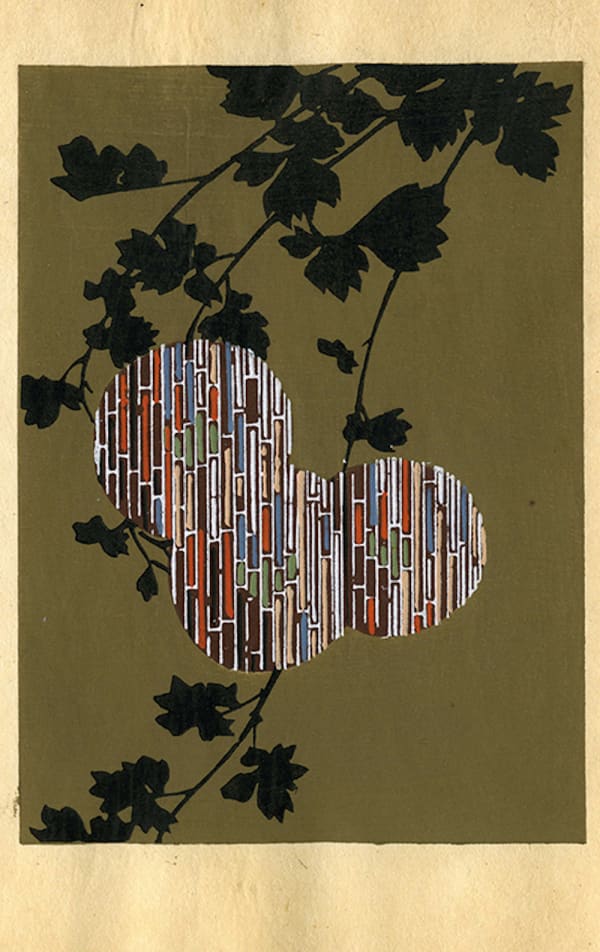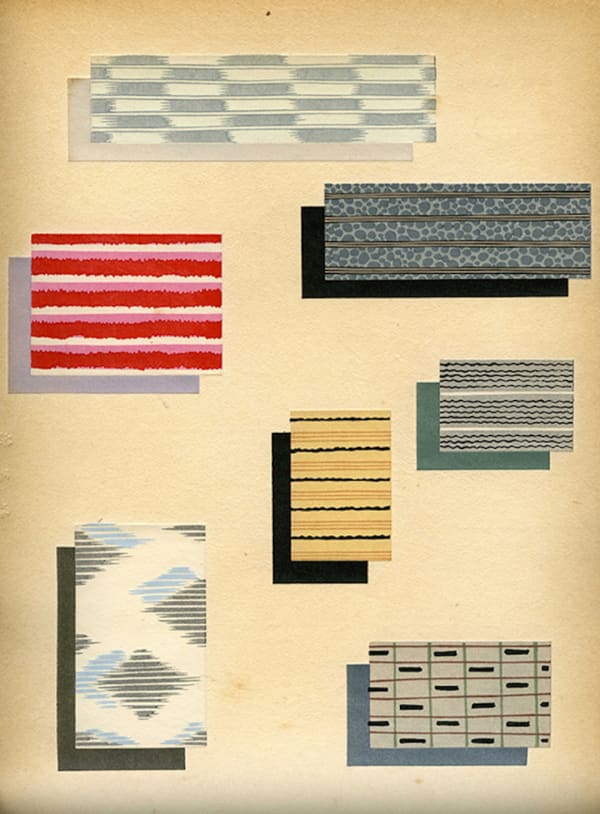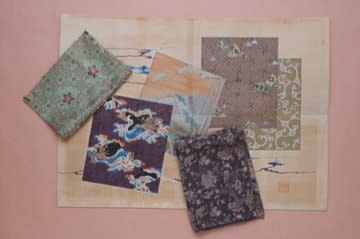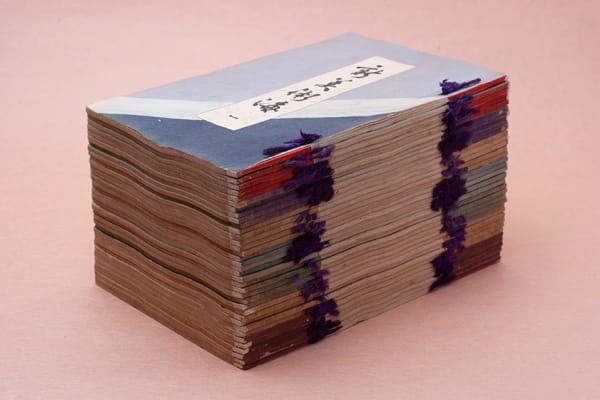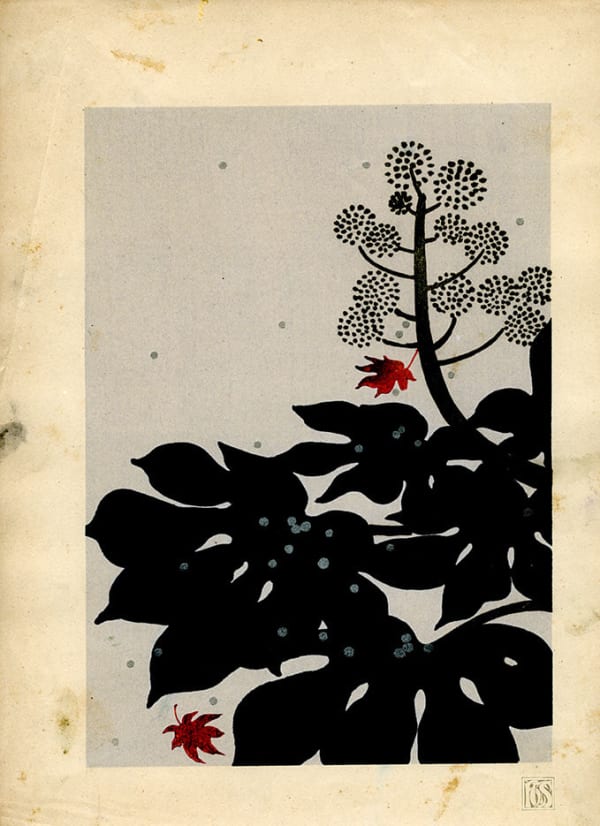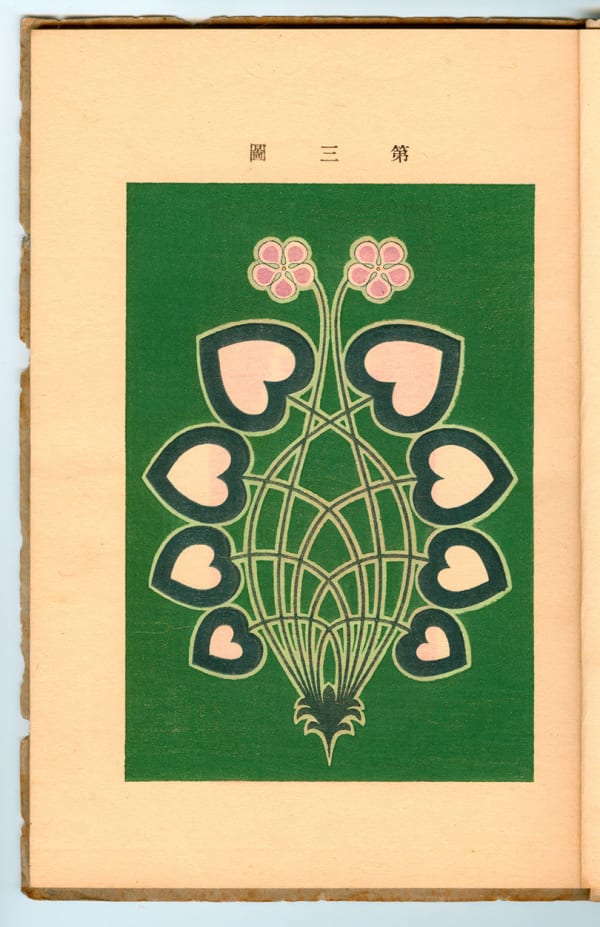ZUANCHO is the Japanese name for design books that were used in Kyoto’s textile industry around 1890 to 1940. The word zu-an-cho consists of three Japanese kanji characters:
ZU ( design or drawing) + AN (idea) + CHO = Book of Design Ideas.
Kimono dealers, their clients, and the craftsmen who dyed, wove, cut, embroidered the textile, and sewed the garments used zuancho to communicate with each other when designing a custom-made kimono. The books themselves were made by skilled artisans who hand-carved designs onto woodblocks, and hand-printed the pages. In the run-up to WWII, the books fell out of use and vanished – until I happened to find a trove of forgotten volumes stored in a warehouse on my family’s century-old estate. With my grandmother’s blessing, I brought them to the United States, where they have come to be viewed as unique works of art. In 2008, I co-curated an exhibition of Zuancho in Kyoto: Textile Design Books for Kimono Trade, at Stanford University, which has started building a collection of zuancho for its Department of Special Collections.
ZU ( design or drawing) + AN (idea) + CHO = Book of Design Ideas.
Kimono dealers, their clients, and the craftsmen who dyed, wove, cut, embroidered the textile, and sewed the garments used zuancho to communicate with each other when designing a custom-made kimono. The books themselves were made by skilled artisans who hand-carved designs onto woodblocks, and hand-printed the pages. In the run-up to WWII, the books fell out of use and vanished – until I happened to find a trove of forgotten volumes stored in a warehouse on my family’s century-old estate. With my grandmother’s blessing, I brought them to the United States, where they have come to be viewed as unique works of art. In 2008, I co-curated an exhibition of Zuancho in Kyoto: Textile Design Books for Kimono Trade, at Stanford University, which has started building a collection of zuancho for its Department of Special Collections.
-
 Bunmeifuri meiji zuan, meiji 38 1905
Bunmeifuri meiji zuan, meiji 38 1905 -
 Shima to kasuri, not dated
Shima to kasuri, not dated -
 Tamahiro Shimomura, Daiten Zuan, 1913
Tamahiro Shimomura, Daiten Zuan, 1913 -
 after Sotatsu Tawaraya, Hato, 1910 $ 3,800.00
after Sotatsu Tawaraya, Hato, 1910 $ 3,800.00 -
 Shinshuko, 1905 (meiji 38) Sold
Shinshuko, 1905 (meiji 38) Sold -
 Tamahiro Shimomura, Shikishimagata (8 volumes), 1904-1905
Tamahiro Shimomura, Shikishimagata (8 volumes), 1904-1905 -
 Seifu Tsuda, Senshoku zuan (vol 1, 3, 4), 1904
Seifu Tsuda, Senshoku zuan (vol 1, 3, 4), 1904 -
 Ryuko Goto, Orekagami 5, 1903
Ryuko Goto, Orekagami 5, 1903 -
 Shin-bijutsukai (set), 1896 - 1911$ 20,000.00
Shin-bijutsukai (set), 1896 - 1911$ 20,000.00 -
 Sekka Kamisaka, Shimano Moyo, 1901$ 1,800.00
Sekka Kamisaka, Shimano Moyo, 1901$ 1,800.00 -
 Bijutsukai (set), 1896 - 1911
Bijutsukai (set), 1896 - 1911 -
 Hisui Sugiura, Hisui Kacho Zuan-shu, 1917$ 2,200.00
Hisui Sugiura, Hisui Kacho Zuan-shu, 1917$ 2,200.00 -
 Teijiro Kajita, Wakakusa, 1903$ 800.00
Teijiro Kajita, Wakakusa, 1903$ 800.00 -
 Korin Furuya, Shin Bijutsukai Volume 10, 1902$ 550.00
Korin Furuya, Shin Bijutsukai Volume 10, 1902$ 550.00 -
 Shin Bijutsukai Volume 15, 1902$ 550.00
Shin Bijutsukai Volume 15, 1902$ 550.00 -
 Korin Furuya, Shin bijutsukai Volume 2, 1902$ 550.00
Korin Furuya, Shin bijutsukai Volume 2, 1902$ 550.00 -
 Korin Furuya, Shin Bijutsukai Volume 3, 1902$ 650.00
Korin Furuya, Shin Bijutsukai Volume 3, 1902$ 650.00 -
 Shin Bijutsukai Volume 36, 1902$ 750.00
Shin Bijutsukai Volume 36, 1902$ 750.00 -
 Korin Furuya, Shin Bijutsukai Volume 4, 1902$ 550.00
Korin Furuya, Shin Bijutsukai Volume 4, 1902$ 550.00 -
 Makie no kagami 2 volumes, 1896$ 850.00
Makie no kagami 2 volumes, 1896$ 850.00
